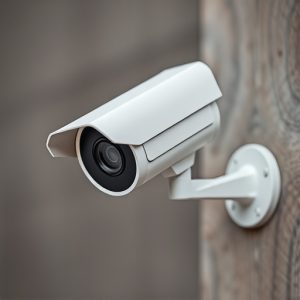Mastering Dummy Camera & Red Light Placement for Maximum Security
Strategic placement of dummy camera red lights acts as a powerful psychological deterrent for intrud…….
Strategic placement of dummy camera red lights acts as a powerful psychological deterrent for intruders and criminals, misleadng them by simulating enhanced surveillance. High-risk areas like intersections with poor visibility or near sensitive locations should be targeted. Proper positioning at eye level with clear lines of sight and subtle red light indicators encourages safer behavior without compromising privacy. Avoid common mistakes such as obvious placement, cheap replicas, missing night activation, and relying solely on dummy cameras; integrate them into a comprehensive security system for optimal results.
In the realm of security, dummy camera placement strategies have emerged as a powerful tool to deter crime. This article delves into the art of deploying these visual deterrents effectively. We explore how strategically positioning fake security cameras, or red light cameras, can significantly impact public safety and behavior. By examining key considerations, best practices, and common pitfalls, this guide aims to equip readers with the knowledge to harness the psychological power of dummy camera placement for enhanced security.
- Understanding Dummy Camera Placement for Security
- Choosing the Right Locations for Red Light Cameras
- Visual Deterrence and Psychological Impact
- Best Practices and Common Mistakes to Avoid
Understanding Dummy Camera Placement for Security
Understanding Dummy Camera Placement for Security
Dummy camera placement, also known as fake security camera red light placement, is a strategic approach designed to deter potential intruders and enhance overall security. These visually convincing yet inactive cameras are not just props; they serve as powerful psychological deterrents. By strategically positioning them in areas where real security cameras might be expected, dummy cameras create the perception of enhanced surveillance, thereby reducing the likelihood of criminal activity.
This tactic is particularly effective because it leverages human psychology, exploiting our tendency to avoid spaces perceived as heavily monitored. Dummy cameras are often placed on walls, ceilings, or near entry points, mimicking the locations and angles of genuine security equipment. Their presence alone can deter petty crimes and encourage individuals to choose alternative, less conspicuous routes.
Choosing the Right Locations for Red Light Cameras
When implementing a dummy camera red light placement strategy, identifying high-risk areas is paramount. These are locations where traffic violations are frequent or where specific types of incidents occur regularly. Red light cameras serve as a powerful deterrent when strategically positioned to capture vehicles running red lights. Consider intersections with poor visibility, high accident rates, or areas near schools and hospitals, where drivers may be more prone to disregard traffic signals.
Effective dummy camera placement mimics the presence of active security without revealing their true purpose. By positioning these cameras in visible yet unexpected locations, authorities can maximize their impact on road safety while maintaining an element of surprise. This strategy encourages drivers to stay vigilant, knowing that surveillance is ever-present, thereby reducing infractions and promoting safer driving habits.
Visual Deterrence and Psychological Impact
The strategic placement of dummy security cameras, often disguised as real ones with a subtle red light, serves as a powerful visual deterrent to potential criminals. This tactic leverages the psychological impact of surveillance, creating an environment where individuals are less likely to engage in illegal activities. The mere presence of these fake cameras can significantly alter behavior, making it harder for thieves or vandals to act without fear of being caught on camera.
The red light, a unique feature of dummy cameras, adds to the sense of vigilance and security. It sends a subtle but clear message that eyes are watching, even if the device is not authentic. This psychological effect extends beyond the physical space, potentially deterring crimes in neighboring areas as word spreads about the enhanced security measures in place.
Best Practices and Common Mistakes to Avoid
Best Practices and Common Mistakes to Avoid
When deploying dummy security cameras, proper placement is key. Best practices involve strategically positioning them in areas where genuine cameras would be expected—at eye level, with clear lines of sight, and near lighting fixtures. Using a red light indicator can subtly suggest surveillance without revealing the camera’s actual presence. This technique deters potential criminals by creating a perception of enhanced security without compromising privacy.
Conversely, common mistakes to avoid include placing dummy cameras in obvious, isolated locations or using cheap, poorly designed replicas that lack realistic features. Additionally, forgetting to activate the red light during nighttime hours can render these devices ineffective. It’s also crucial not to rely solely on dummy cameras; they should complement a comprehensive security system for optimal results.
Dummy security cameras, strategically placed as red light cameras, offer a powerful tool for enhancing physical security. By understanding their visual deterrence and psychological impact, you can effectively choose optimal locations to prevent crime. Adhering to best practices and avoiding common mistakes ensures these cameras serve their intended purpose. Remember, the right dummy camera placement strategy can significantly contribute to creating a safer environment.


